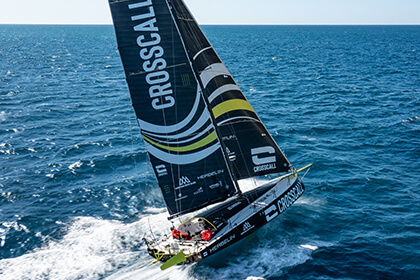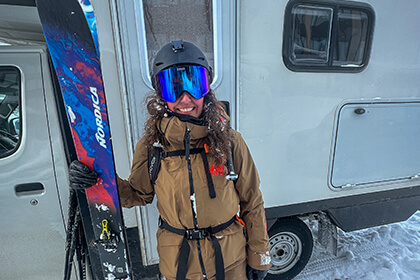
October 21, 2025 10 min read
How to plan your ski trip to Japan
Skiing Japan with Nat Segal: Hokkaido RV adventure, volcano tours, and how to thrive through a dry spell.
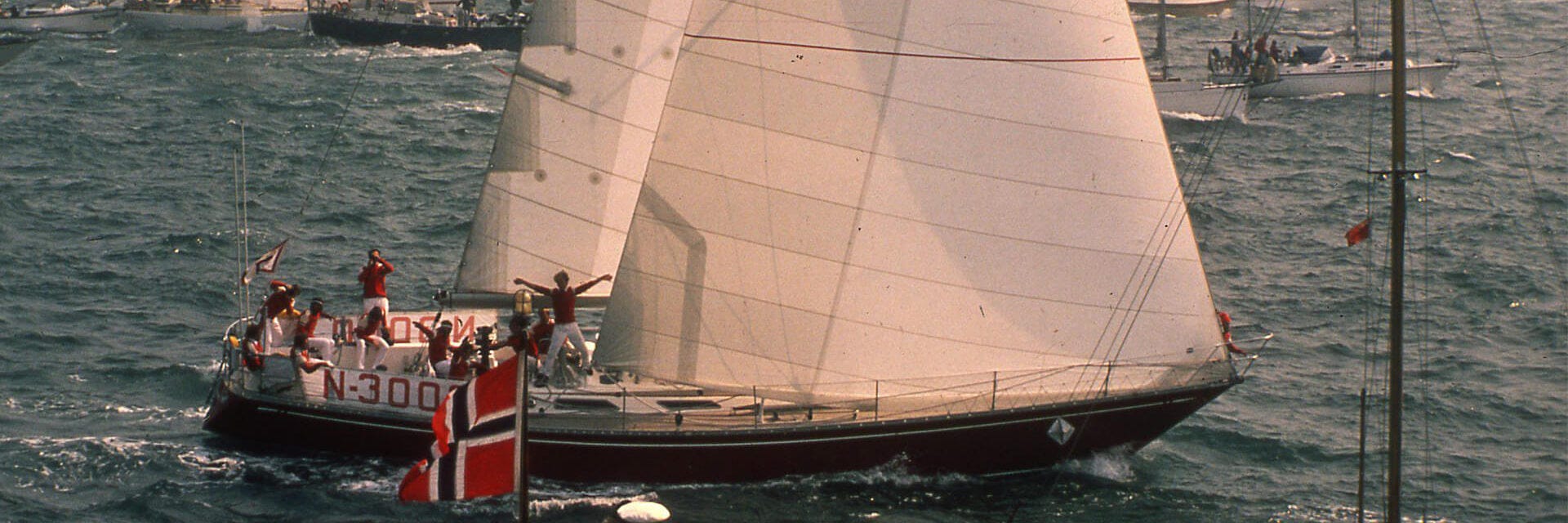
June 29, 2022
4 min read
In 1877, Captain Helly Juell Hansen saw a need for better protection from the harsh Norwegian elements. He and his wife, Maren Margarethe, began soaking coarse linen with linseed oil. This state of the art process resulted in water resistant clothing for workers at sea, and Helly Hansen was born.
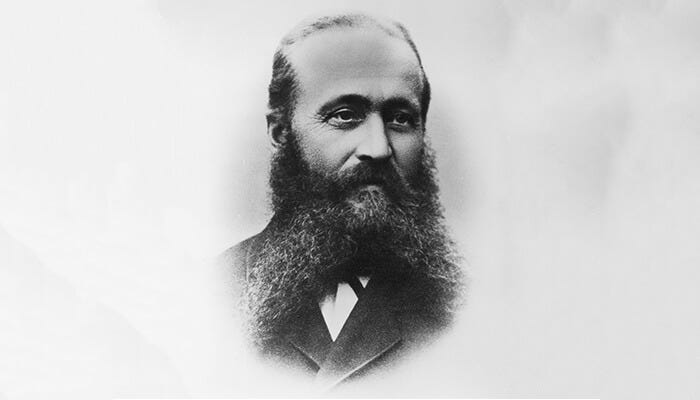
Working out of their basement, the innovative and industrious pair worked relentlessly on creating workwear for long days at sea. The Norwegian manufacturer quickly became a major player in the clothing industry. Only a year after its inception, Helly Hansen was awarded the first of many awards at the World Exhibition in Paris.
The rest is a real Norwegian industrial adventure. In a short time, Helly Hansen increased production, built and bought plants throughout the country, and expanded product range. Helly Hansen has manufactured everything from products for agriculture and industry to life jackets made of cork, to gas masks, and rugs.

Decade after decade, Helly Hansen has been able to tackle many winds of change in the world around us . . . adapting and expanding into new areas of business. Yet as customer tastes, markets, and technologies evolved, the common thread has always been gear that fits Norway’s cold and wet climate.
Tor Jenssen, Chief Marketing Officer, has worked 15 years in Helly Hansen and has been part of store openings from Moscow to China. “It’s fantastic to see that the ideas that are being designed in Norway strike interest in the rest of the world,” he said. Helly Hansen now has a total revenue of over $400 million USD. Eighty percent of this is outside Norway. There are only a few other Norwegian brands that have gained a position that strong in the global market. “I’m incredibly proud. We initially became relevant because we used new technologies to keep people warm and dry. Today we remain true to who we are. We are very focused on the design, but our products will always be functional,” said Jenssen.
In the early 1900s, people began to have more free time and Helly Hansen was among the first to design clothes for different purposes. Helly Hansen added camping and sailing gear to the ever-evolving product line, as well as fashionable rainproof clothes for urban use. In the Moss Urban and Industrial Museum archive, you can find a Helly Hansen advertisement for leisure clothes from 1913! Workwear was only the beginning . . .
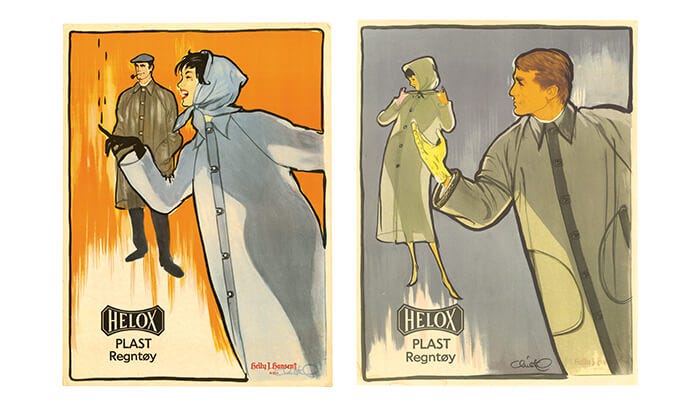
After WWII, Helly Hansen’s management and engineers traveled to the United States in an effort to understand plastic production. Afterward, Helly Hansen was among the first to adopt plastic in clothing production. This was a technological innovation that revolutionized the clothing industry.
Helly Hansen used the same techniques as before but replaced linseed oil with PVC. This new product went under the names Linox. Evolving from Linox, Helox was developed, where a PVC blend was rolled out into thin plastic film through two calender presses. With this material, Helly Hansen could make transparent rain clothes. That way, all the pretty capes and coats were visible below rain clothing. It could also be sewn into coats to make them waterproof.
One challenge with plastic clothing is that it doesn’t breathe. Helly Hansen worked a long time to overcome this hurdle. Although various air ducts worked to mitigate this problem, we knew that more could be done. In 1984, HELLY TECH® was launched. A waterproof and windproof, but also breathable technology.
Starting in the 60s, Helly Hansen also worked with several varieties of thermal underwear, and in 1970, Helly Hansen invented the LIFA® base layer, the first technical base layer, a technology that continues to evolve as the best technical base layer to this day. This layed the foundation for our three layer formula consisting of LIFA® (base layer), Pile or LIFALOFT® (midlayer), and HELLY TECH® (outer layer). Learn more about our technologies and their evolution in the Helly Hansen heritage timeline.
Helly Hansen gear had its Olympic debut in the 1952 Winter Olympics. In the years that followed, Olympic sailors adopted our gear. In 1981, as the first Norwegian boat ever, the boat Berge Viking participated in the Whitbread Round the World Race, circumnavigating the globe. A custom jacket was designed for the team. It was red with two white and one blue horizontal stripes on the chest, one of the most iconic Helly Hansen designs that live on to this day in the Salt Collection.
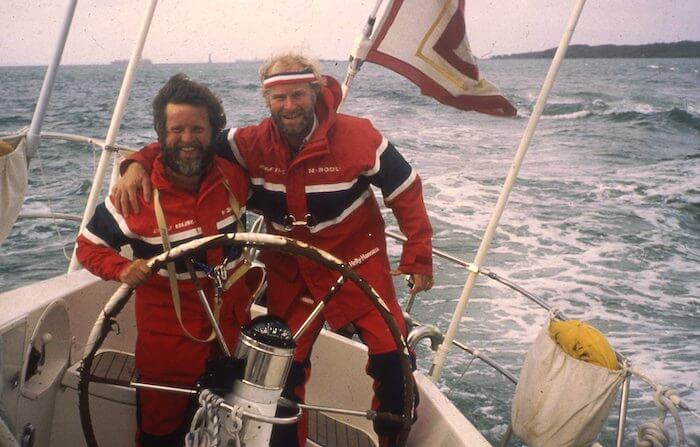
It is a dynamic process. One of the reasons we've adapted so well is that we are always searching for functional practicality.
Although rainwear is still important for Helly Hansen, our technical innovations have established our position in extreme sports such as sailing and skiing. Today, our products are used by elite sailors, over 55,000 mountain professionals, and guides in over 200 ski resorts. “When it comes to innovation, we never stop working. We launch a new collection every six months and must constantly rethink and test new products,” says Tor Jenssen, adding:“It is a dynamic process. One of the reasons we’ve adapted so well is that we are always searching for functional practicality.”
Today, the Helly Hansen name is known throughout the world . . . our brand has thrived throughout more than a century of changes. Helly Hansen headquarters are now in Oslo, just a stone’s throw from the sea, and a quick sail from where it all started in Moss. Even though we remain close to our roots, we hope that the next 140 years will continue with more innovation and growth . . . helping people stay and feel alive for centuries to come.
For a Norwegian perspective on our 140 year anniversary, check out Aftenposten’s Article: Har Holdt Regnet ute i 140 år.

October 21, 2025 10 min read
Skiing Japan with Nat Segal: Hokkaido RV adventure, volcano tours, and how to thrive through a dry spell.
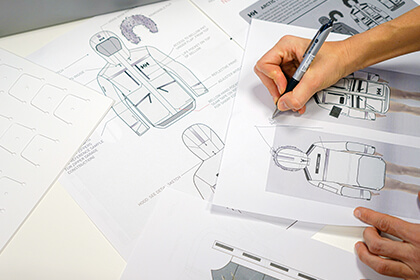
September 29, 2025 4 min read
An inside look at how Helly Hansen designed the Arctic Patrol Down Parka with insights from Arctic scientists for extreme conditions.
